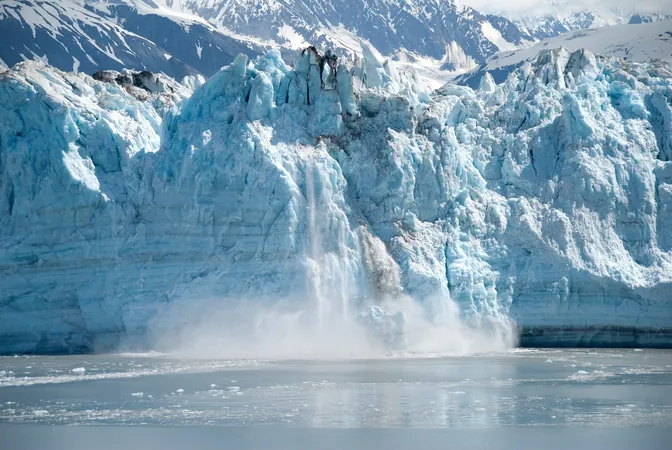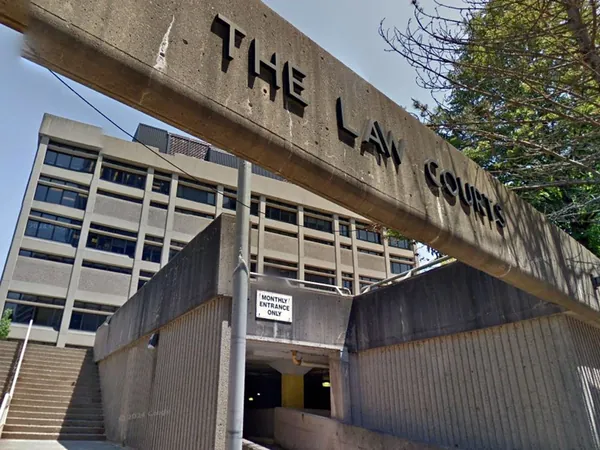
Glaciers' Swift Movements Could Revolutionize Volcano Eruption Predictions!
2024-11-13
Author: Noah
Innovative Research Linking Glacial Movements to Volcanic Activity
Recent research reveals a fascinating link between the speed of glaciers and nearby volcanic activity. Glaciers located within a mere three miles of a volcano are found to move almost 50% faster than their counterparts elsewhere, suggesting that monitoring glacier movements could significantly improve early warning systems for potential eruptions.
In-Depth Study and Findings
Published in Communications Earth & Environment, the study conducted by researchers from the University of Aberdeen, University of Birmingham, and Manchester Metropolitan University analyzed the velocity data of approximately 85% of the world’s 217,000 glaciers. Even after accounting for variables such as climate conditions, ice thickness, and surface slope, the results indicated that glaciers near active volcanoes exhibited a striking 46% increase in flow rates compared to others.
Examined Volcanoes and Their Implications
This research examined some of the globe's most renowned volcanoes, including Mt. Rainier and Glacier Peak in Washington, as well as Alaska's Mt. Redoubt and Mt. Veniaminof. It also touched on Iceland’s notorious Eyjafjallajokull, whose 2010 eruption caused widespread air travel disruptions for around 10 million passengers—a vivid reminder of the havoc volcanic eruptions can wreak.
Mechanism Behind Glacier Acceleration
The team concluded that the heightened geothermal heat emanating from volcanic activity likely melts the ice at the glacier's base, reducing friction with the ground and facilitating faster glide rates. This critical finding urges volcanologists to reconsider how glacier dynamics can signal impending volcanic eruptions.
Potential Life-Saving Applications
Dr. Joseph Mallalieu from the University of Birmingham highlighted the potential life-saving implications of their research. "Ice-covered volcanoes pose a significant risk globally, as glacial meltwater during eruptions can instigate dangerous flooding and debris flows that threaten nearby communities."
Proactive Monitoring for Volcanic Threats
The ability to track changes in glacier velocities could equip scientists with a proactive tool to identify volcanic threats months before an eruption. This advancement may enable timely alerts to local authorities, allowing for effective evacuation plans and greater public safety without the need for rush decisions in crisis situations.
Impacts on Volcano Monitoring
Co-author Professor Matteo Spagnolo from the University of Aberdeen added that using glacier velocity as a predictive measure could improve monitoring efforts significantly. "It allows us to focus on volcanoes showing signs of unrest, providing communities with precious time to prepare," he noted.
Future Research Directions
Dr. Iestyn Barr, a reader in Glaciovolcanology at Manchester Metropolitan University, expressed enthusiasm for the study's findings, stating: "This is a groundbreaking opportunity to harness glacier monitoring as a predictive tool for volcanic eruptions—a potential we’re eager to explore further in the years ahead."
Conclusion: A Safer Future in Volcanic Regions
As natural disasters continue to pose serious threats around the world, this innovative intersection of glaciology and volcanology could pave the way for safer futures for at-risk populations living in the shadows of mighty volcanoes. Stay tuned as scientists delve deeper into this groundbreaking research, potentially saving lives and averting disasters!









 Brasil (PT)
Brasil (PT)
 Canada (EN)
Canada (EN)
 Chile (ES)
Chile (ES)
 España (ES)
España (ES)
 France (FR)
France (FR)
 Hong Kong (EN)
Hong Kong (EN)
 Italia (IT)
Italia (IT)
 日本 (JA)
日本 (JA)
 Magyarország (HU)
Magyarország (HU)
 Norge (NO)
Norge (NO)
 Polska (PL)
Polska (PL)
 Schweiz (DE)
Schweiz (DE)
 Singapore (EN)
Singapore (EN)
 Sverige (SV)
Sverige (SV)
 Suomi (FI)
Suomi (FI)
 Türkiye (TR)
Türkiye (TR)